Soria, guide, province. Three words that together have given rise to an article that could well be divided into fascicles. Because whoever discovers Soria, repeats. That's how it is.
From the best torreznos in the world, through Romanesque (a lot), castles and watchtowers, Magic towns, legends, mysticism, a lot of literature and, of course, a magical natural environment; In this guide we cover an almost infinite province.
One of his says sanjuaneras (the soundtrack of the festivals that every self-respecting Sorian sings at the top of his voice): Soria is the glory of Spain. And boy is it.
With the rural charm typical of those small provinces that one does not cross, but marks on the map, as Gabinete Caligari correctly recited, I am on my way to Soria. And to his Duero, his Valley, his Moncayo…
A WALK THROUGH SORIA CAPITAL
land of poets Walking through the streets of Soria is synonymous with meeting Bécquer, Machado, Gerardo Diego, Concha de Marco or Julio Garcés.
Surrendered to the charms of this Castilian corner, his words and works can be found reflected in places like the old elm , to whom Machado dedicated some verses and next to which lies the tomb of his Leonor.
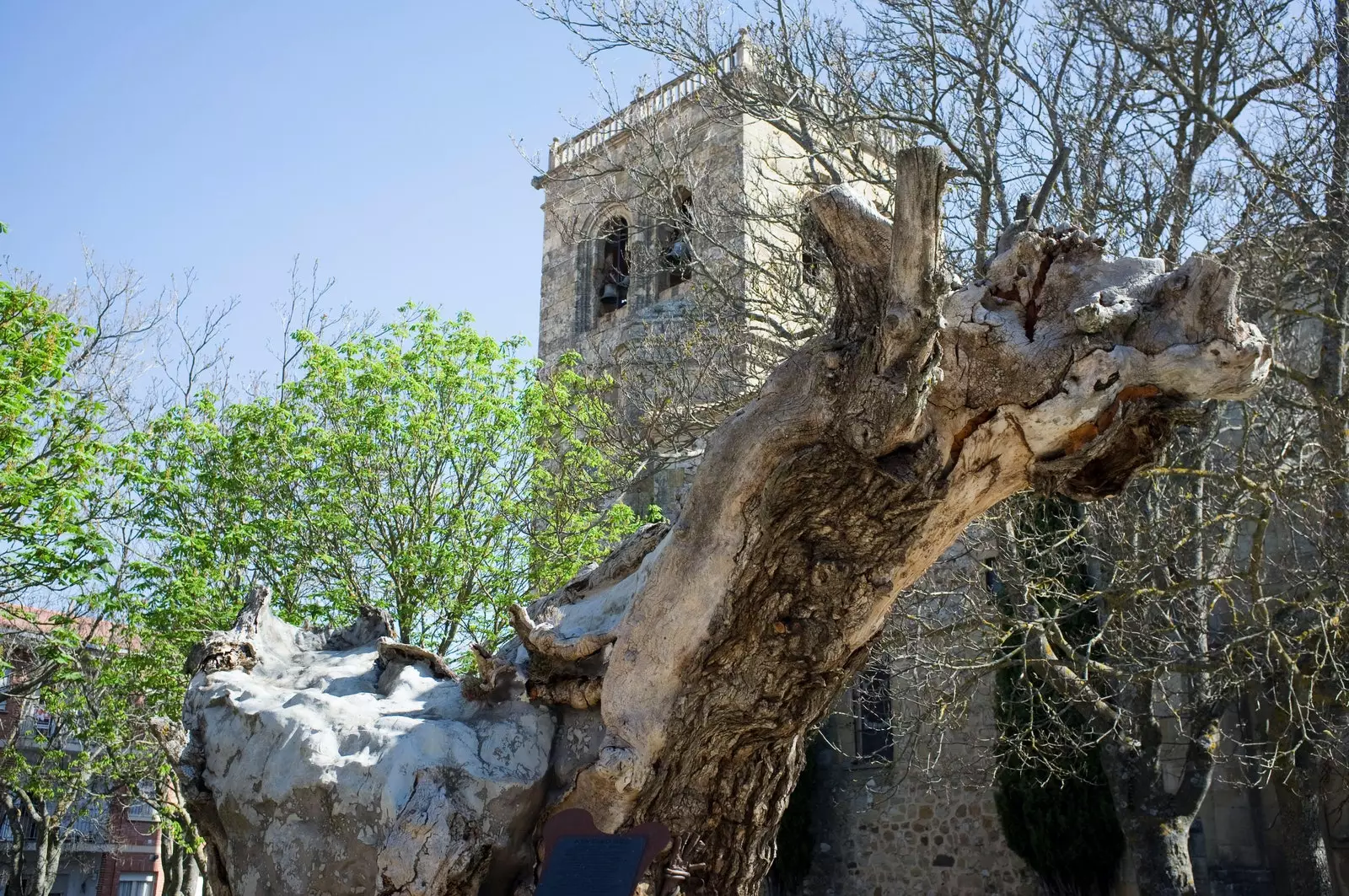
Old elm, in Soria.
and who has the legends of Bécquer in his memory Surely you remember the disturbing story of the Mount of the Souls . It happened here, at least in the writer's imagination, at the foot of the Duero River. What's more, every October 31 there is a recreation of history in front of the mound in question.
Before surrendering to the heart of the city, an obligatory walk requires the Hermitage of San Saturio , the most representative postcard of Soria.
Clinging to the rocky cliff that stands out over the Duero, an octagonal construction runs over several floors and allows you to enter a hermit cave , feeling the cold and loneliness of the hermit who once lived within its walls.
Mysticism continues nearby, in the Monastery of San Juan de Duero , whose cloister is a complete art class, since each of its eight portions belongs to a different artistic trend. But the real magic lies when you pull out a pendulum. Yes, do not forget to put it in the suitcase, because you will check the electromagnetic field that is under the only arch that does not end in a column . Pure soriano magnetism.
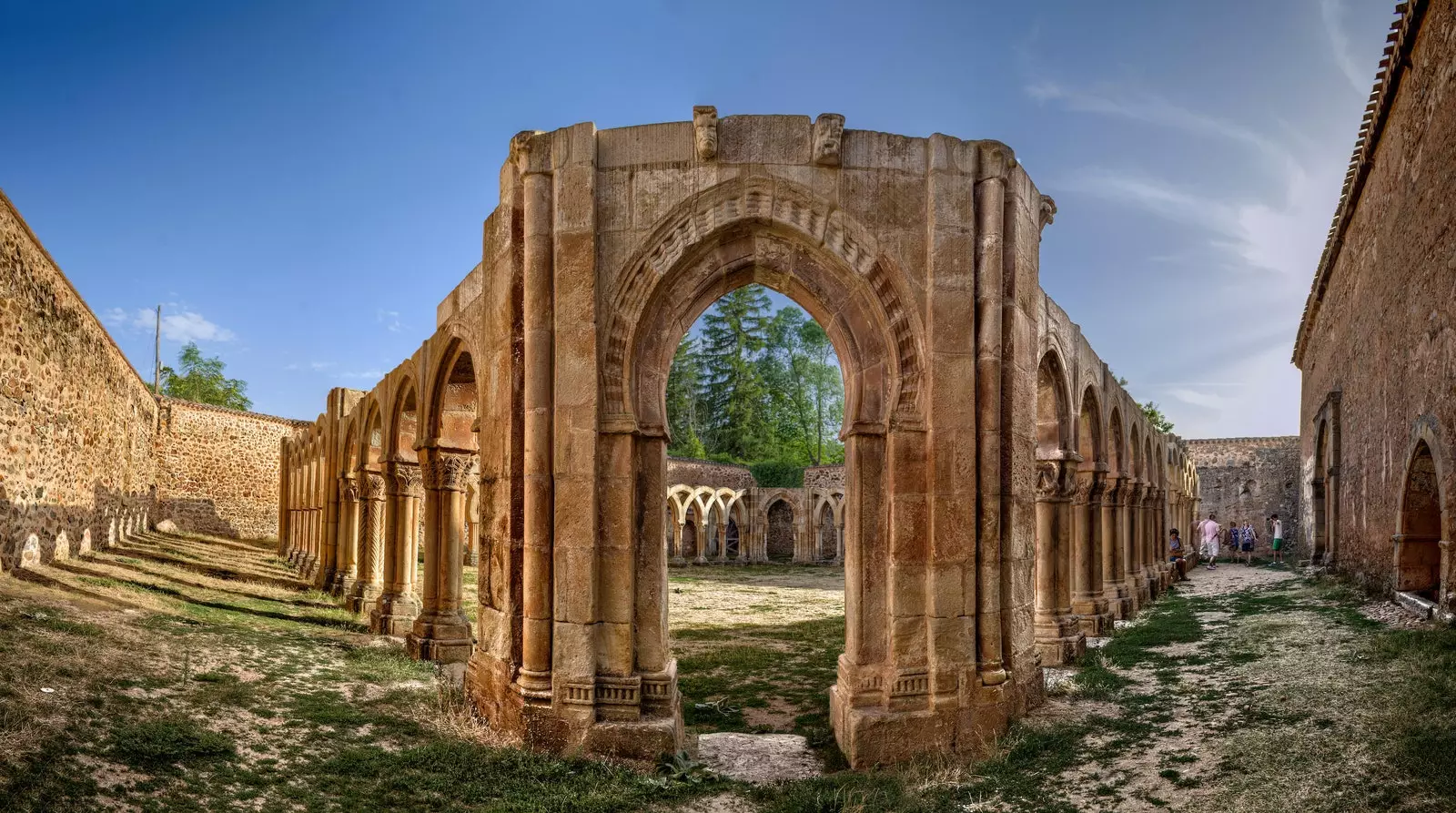
Monastery of San Juan de Duero, Soria.
Leaving the Duero and heading towards the center of the city, on the way you will cross the Church of Santo Domingo , declared a Historic-Artistic Monument, and the St. Peter's Co-Cathedral , a jewel of the Castilian Romanesque.
In addition, Soria has traces of settlements from the Iron Age and the Celtiberian era, and this is reflected in the Numantine Museum . From the Middle Ages its wall and castle are witnesses and from the Renaissance the Palace of the Counts of Gómara , a jewel of Soria's civil architecture and current Provincial Court.
of the period baroque is he Antonio Machado Institute , which still preserves the chair in which the Sevillian poet taught French just as it was found. The classroom can be visited during school hours.
Although, without a doubt, the best tribute to Machado (and Leonor), as well as the best views, wait in the Mirador Park , at the Mirador de los Cuatro Vientos.
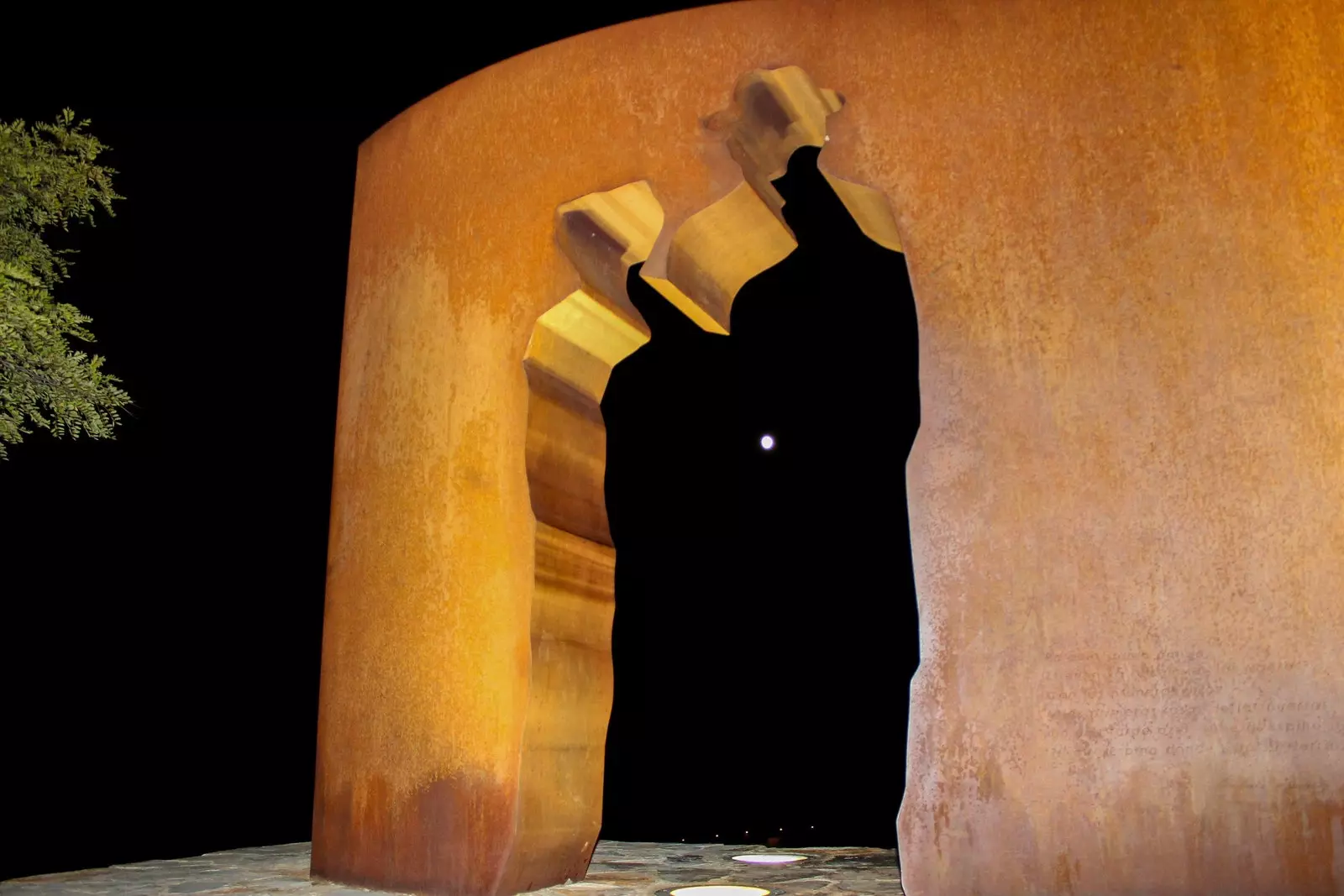
Viewpoint of the Four Winds, Soria.
Where to eat.
We could mention many more stops, but hunger is already pressing. In the Castilian Plaza Mayor is the Castilian Inn , a classic where the torrezno is prepared with mastery and is always a success.
From here, you can also admire the fountain of lions , with the two felines pouring water from their mouths; the House of the Common , current Local Historical Archive; the Palace of the Beteta , popularly known as the Tower of Doña Urraca; the Palace of the Twelve Lineages , current Town Hall; the courthouse palace , current cultural center; and the Church of Santa María la Mayor , reformed Romanesque temple.
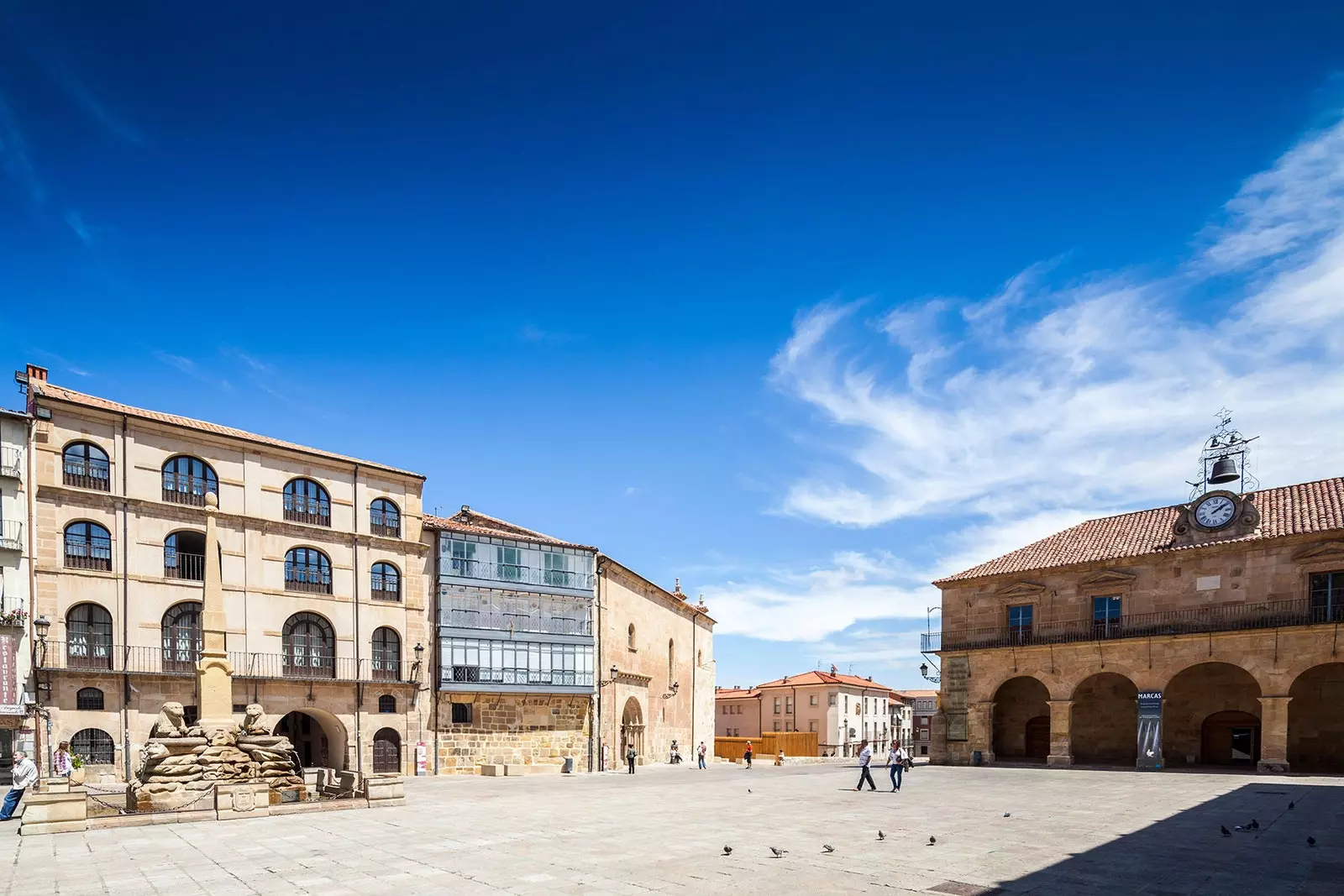
Plaza Mayor of Soria.
Continuing along the Collado, the main artery of the city, Gerardo Diego will greet you. The statue of him waits in The Casino, a 19th century café to which poets often went.
Here two options can be taken. Or veer to the right to try the lids on the San Clemente Square (also known as The Tube), where you can even find kangaroo (Bar Patata, a classic) ; or continue to the end and face the one known by the locals as Farriers Square . Here the terraces and bars are distributed in each corner, being the Iruña prawns other must.
More ideas? If the weather accompanies the city garden, the Alameda de Cervantes , La Dehesa for the locals, will allow you to forget everything among hundreds of trees, mysterious walks and the kiosk , a modern restaurant whose menu highlights meats from Soriana. It is also a perfect place to enjoy a drink.
Of course, the city's Michelin star could not be missing from the list: Bulwark . your chef, Oscar Garcia Marina will be in charge of surprising with its tasting menus –traditional or seasonal. Among its Height Menu (2022) we find marinades, artichokes, asparagus … and of course, mushrooms of all kinds. Betting on game and local products, it is the perfect place to discover Oncala cheese or pigeon pâté.
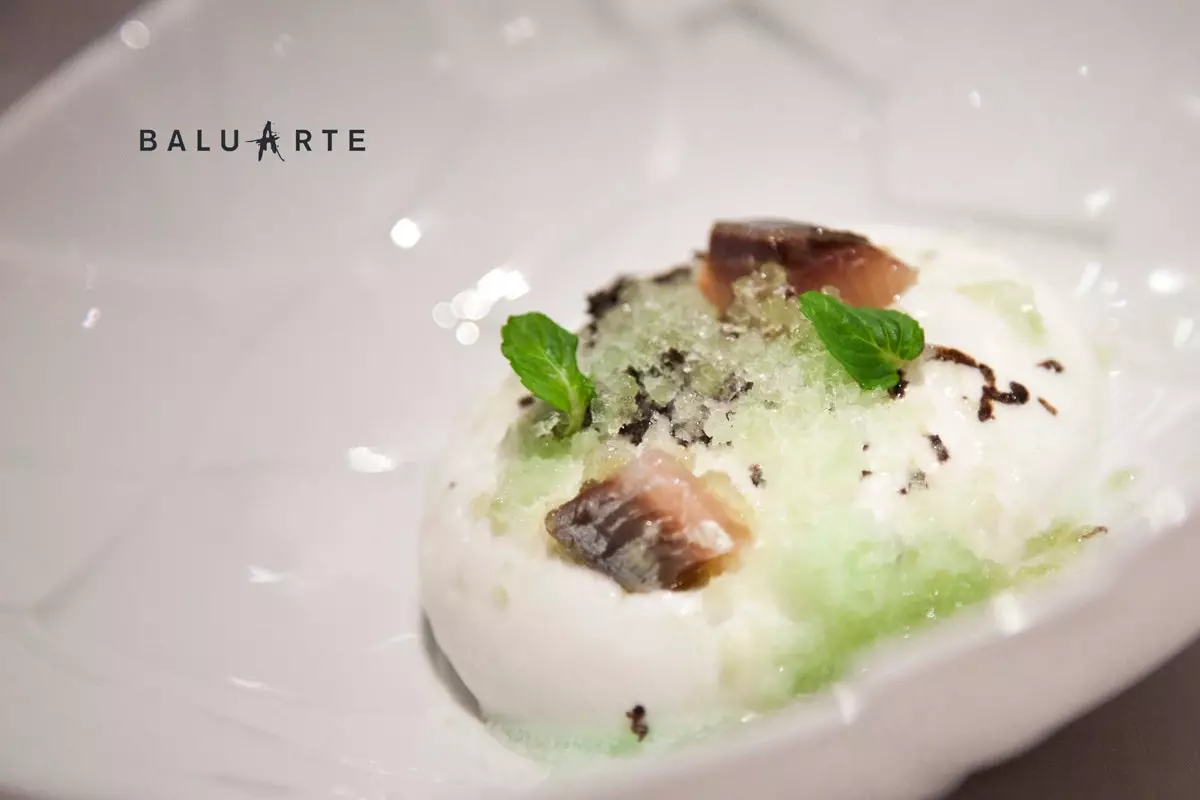
Oncala cheese cream with smoked sardine in Baluarte.
Where to sleep.
In the hotel offer Soria Parador stands imposing on the remains of the castle, with an extraordinary view of the city and the Duero. Another classic of the city is the hotel Alfonso VIII , a four-star located a few steps from the beautiful Becquer corner.
ON HIGHLANDS
traces of dinosaurs, transhumance and fresh air . What more could you want? The Soria Highlands region is the mountain range par excellence.
Also of the stone towns . Among them, a must-see is the medieval yanguas , where its mansions make up a native architecture that collides with a tower of the Catalan Lombard Romanesque.
Declared Historical Artistic Ensemble, their muleteers were so important that they appeared in chapter XV of the first part of Don Quixote de la Mancha.
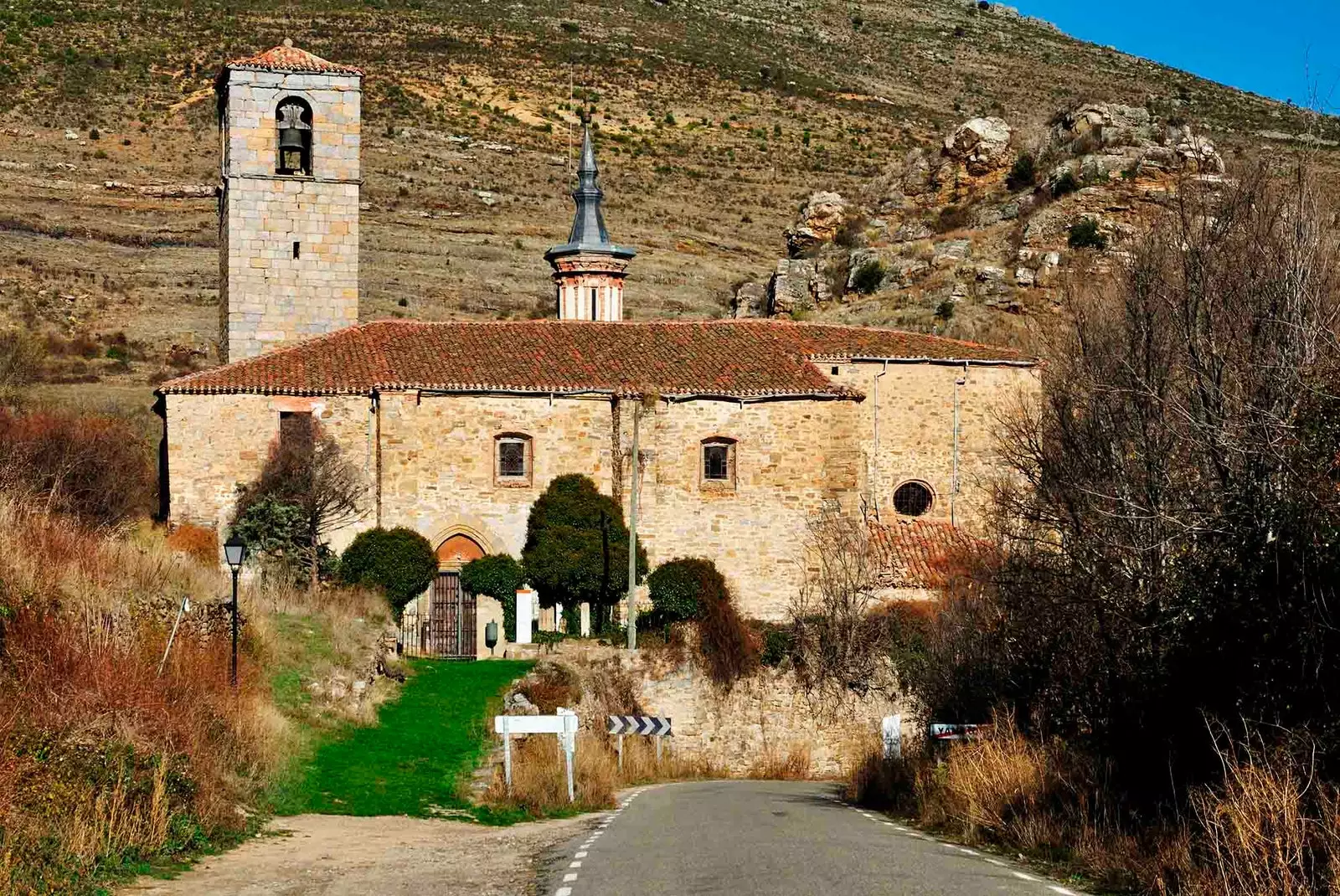
Yanguas, Soria.
Another unmissable town in the area is that of Oncala . Its large emblazoned houses and its churches are still witnesses of the economic importance that this small town had during the 16th to 18th centuries.
A power fruit of its livestock tradition. In fact, here it crosses the Cañada Real Soriana Oriental and wait for the Transhumance Museum in a classic mountain house.
There is also room for tapestries. In the church of Oncala, 10 large tapestries from the 17th century are exhibited, based on the cartons commissioned by the Infanta Isabel Clara Eugenia to Peter Paul Rubens , in 1625.
A pause on the way to Soria and his guide through the province to highlight that Oncala was the setting for the film by Jose Luis Cuerda Total. And where is the abandoned but rebuilt Valdelavilla , you will find Peñafría, from the series 'The People'.
Before leaving the region Don't forget to follow in the footsteps of the dinosaurs with the Route of the Icnitas.
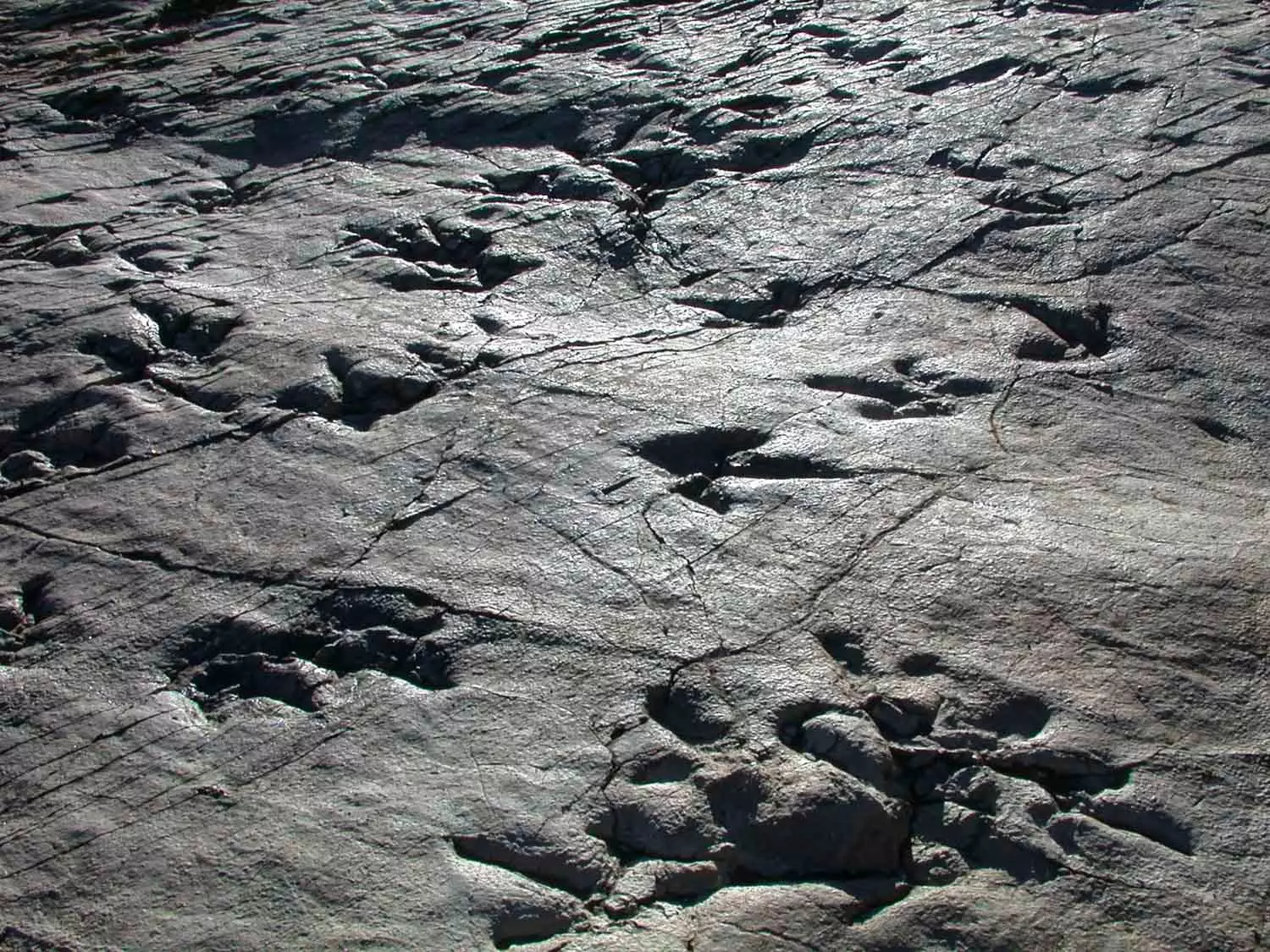
Route of the Icnitas in Soria, Salgar de Sillas.
Where to eat.
I could not miss in this guide for the province of Soria special mention to places with torreznos of scandal . On the way to the aforementioned Valdelavilla, in San Pedro Manrique, those of The County of Motors they have a prize . Another option is to fill the stomach with a traditional dish in the 'Yanguas hostel'.
Where to sleep.
In Breton the Vicente Marin Foundation is not only a museum , is also a perfect place to make an unusual overnight stay.
UNDER THE MONCAYO
"Traitor Moncayo who makes Castile poor and Aragon rich" is recited in this region marked by the influence of the highest summit of the Iberian System (2,314 meters).
Border towns await in this area, with a multicultural past, rich in historical-artistic heritage that, in addition, they adopted Bécquer by marriage. Because he was from Noviercas Casta, and it was common to see him there, as well as in Beratón, Vozmediano (whose imposing castle deserves a stop), Gómara or Almenar.
Literati, in fact, you should take a look at the poet's route around these parts.
By heritage, Agreda It is a mandatory stop, as well as Olvega Y Wall.
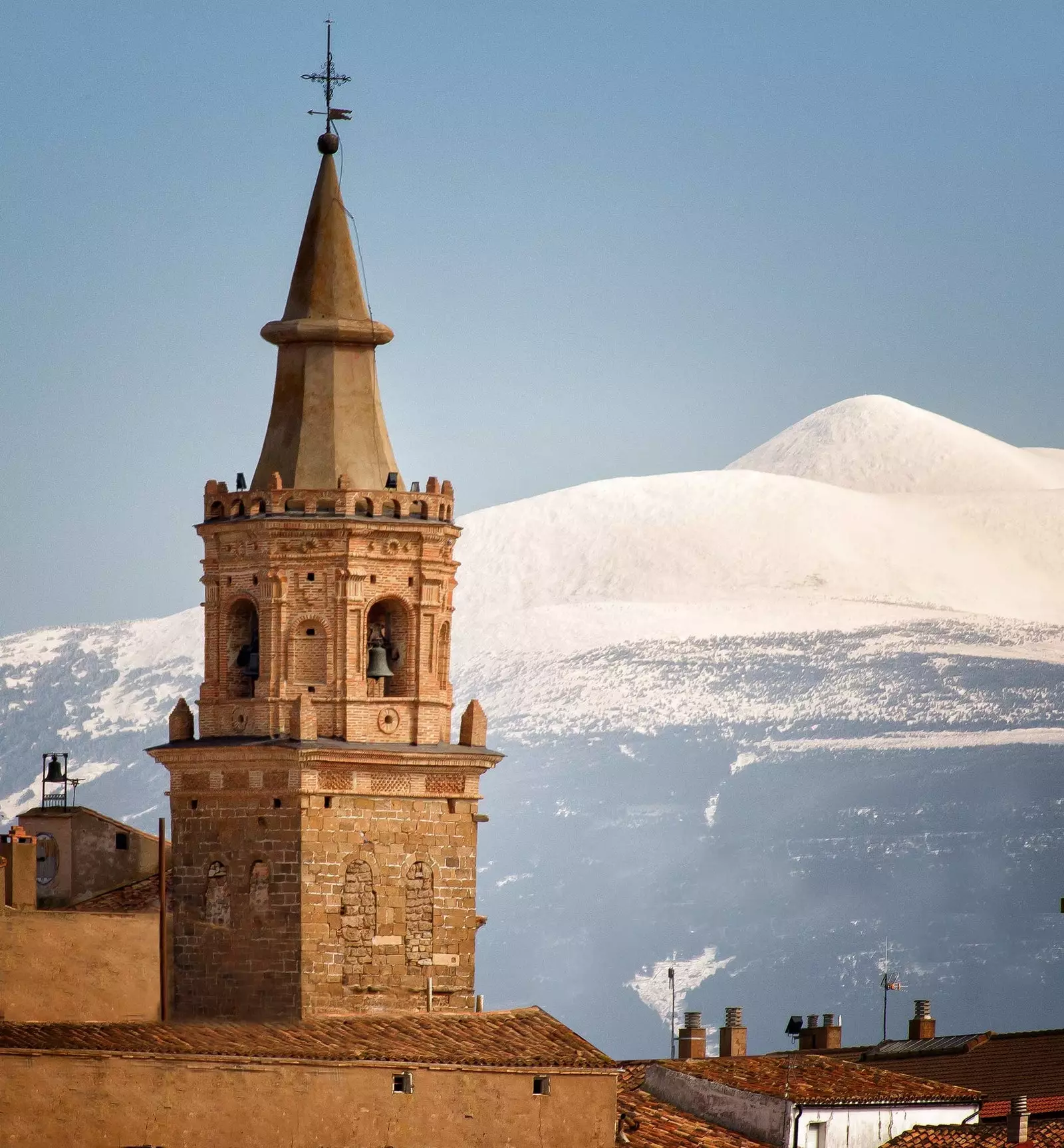
Castilruiz, Soria.
And if the Moncayo is the protagonist, after the Cueva de Ágreda, where the Moncayo Interpretation Center is located, wait for the path to climb to the summits.
Where to eat.
In Agreda nature shows the world a unique product: the red thistle . Impossible to replicate its unique color, texture and flavor outside of these lands. Winter is its season and the local restaurants and bars are the place to try it. In season or out of it, the restaurant Dona Juana It has made a name for itself in the area. Among its specialties, cod stands out.
Where to sleep.
The Mirador del Moncayo hotel assures you a night with views from the heart of Ólvega. Although you can also Sleep on Becquer's house. This tourist apartment occupies what was the poet's house. Reformed, it has five rooms.
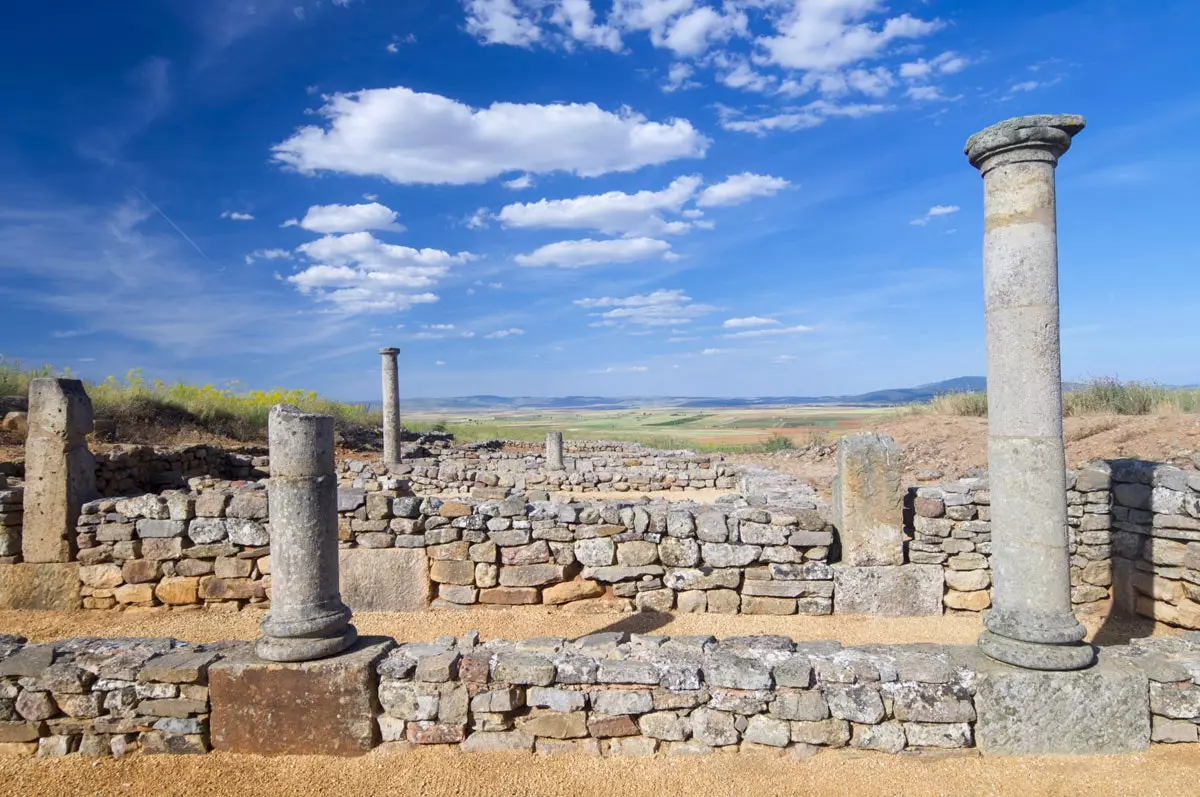
Numancia, Soria.
THE VALLEY: KINGDOM OF HOLLY
The Valley region, through which the Tera and Razón rivers flow, is popularly known as "Little Switzerland Soriana" for its greenery. Although cheese doesn't rule here, but the Butter from Soria , a product with Denomination of Origin that can be purchased salty or sweet.
Just 6 kilometers from the capital awaits garray , heart of the Valley and in whose term is located the deposit of Numancia, a Celtiberian city famous for (almost) resisting the unstoppable Roman army.
Kinder is the landscape offered by the Garagüeta Holly , one of the largest natural concentrations of holly in all of Europe. Without a doubt, autumn is the most magical time to discover it. Another option is the aforementioned town of Oncala, which every year celebrates its Holly and Christmas Ornament Fair on the Constitution Bridge.
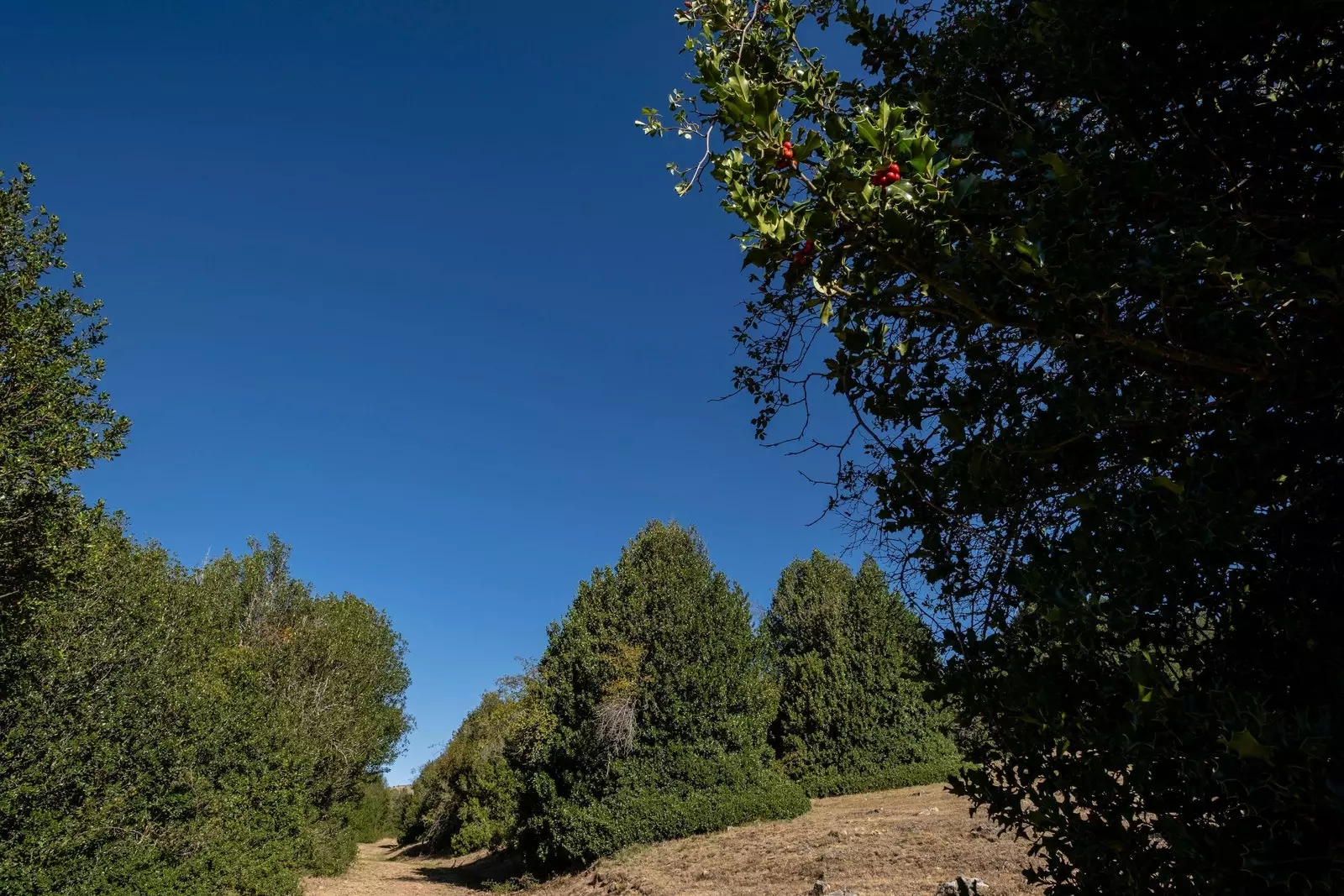
Acebal de Garagüeta, Soria.
Where to eat.
In Garray, spoon dishes and stews bear the surname Goyo. In addition, given the proximity to the capital, you can always return for some torreznos in Herradores.
LAND OF PINE FORESTS (AND GLACIERS)
In addition to Moncayo, Soria can boast of hosting two Natural Parks: Lobos River Canyon and the Laguna Negra and Glaciers of Urbión . And both wait in the region of Tierra de Pinares.
It is interesting to mention that this region is to blame for Soria has a record proportion of trees per inhabitant.
Opening the doors to such a green place awaits bee . Behind her, names like Vinuesa - the town that fell in love with Machado - and the black lagoon, which is said to have no bottom, make up a magical route.
Of course, to reach the top of this environment of glacial origin, where its lagoon awaits, you will have to ascend 1,773 meters of altitude. The route, between pines and beeches, does not disappoint.
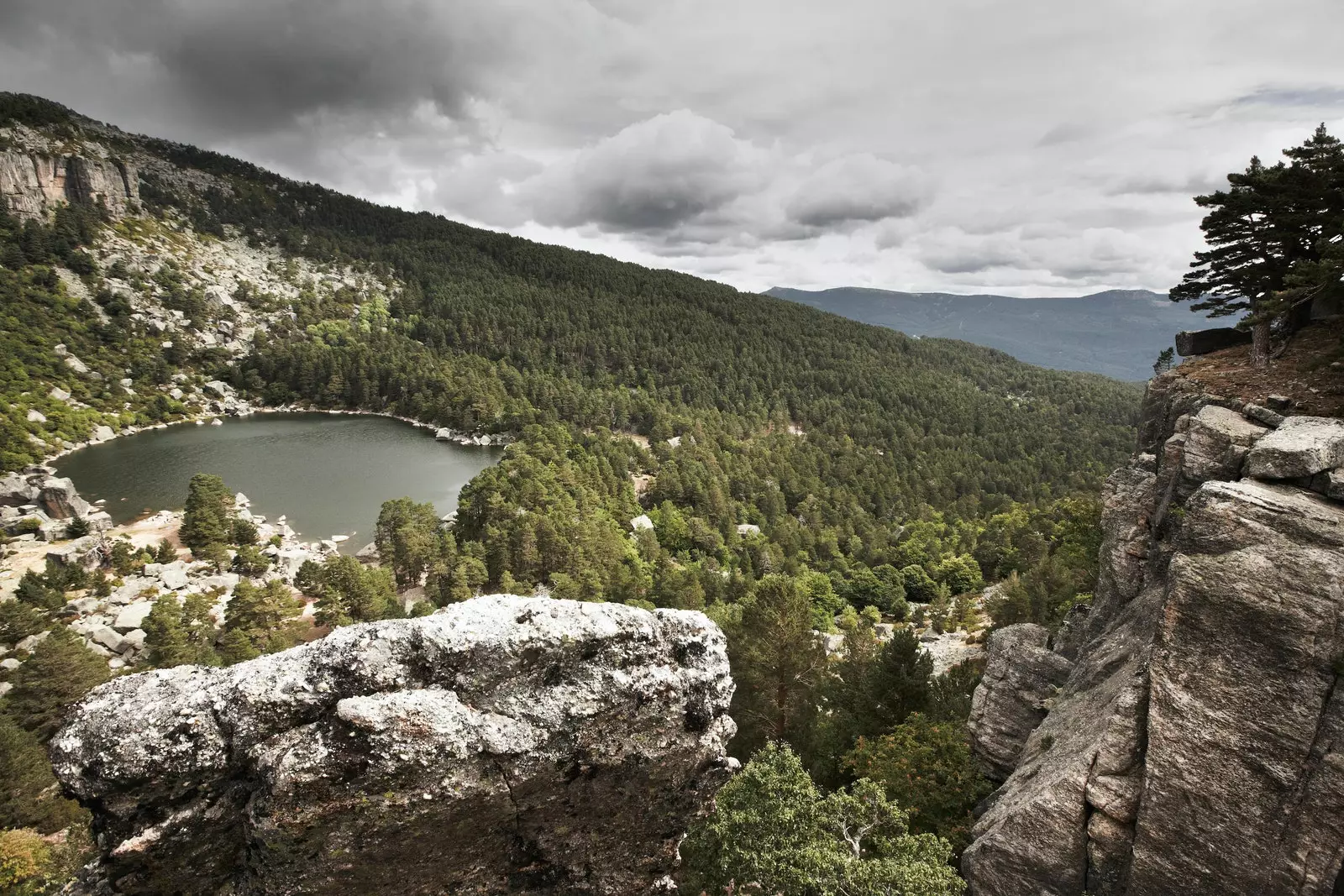
Laguna Negra Natural Park and the Urbión Glacier cycles, Soria.
Another route that will delight hikers is in Covaleda Y Duruelo of the Sierra , two towns that offer routes to the Peak of Urbion.
Skipping south of the shire, Navaleno Y San Leonardo de Yagüe form one of the entrance doors to the Lobos River Canyon . In fact, most visitors take the one kilometer walk from the parking lot located at the entrance to the Park (a 5-minute drive from San Leonardo de Yagüe) to the hermitage of San Bartolomé , a chapel linked to the Templars and where some impressive caves also await.
If there is time and desire, with 15 routes in total, the Griffon Vultures are the main protagonists of this space of more than 10,000 hectares. See it from the viewpoint of the Galiana is priceless.
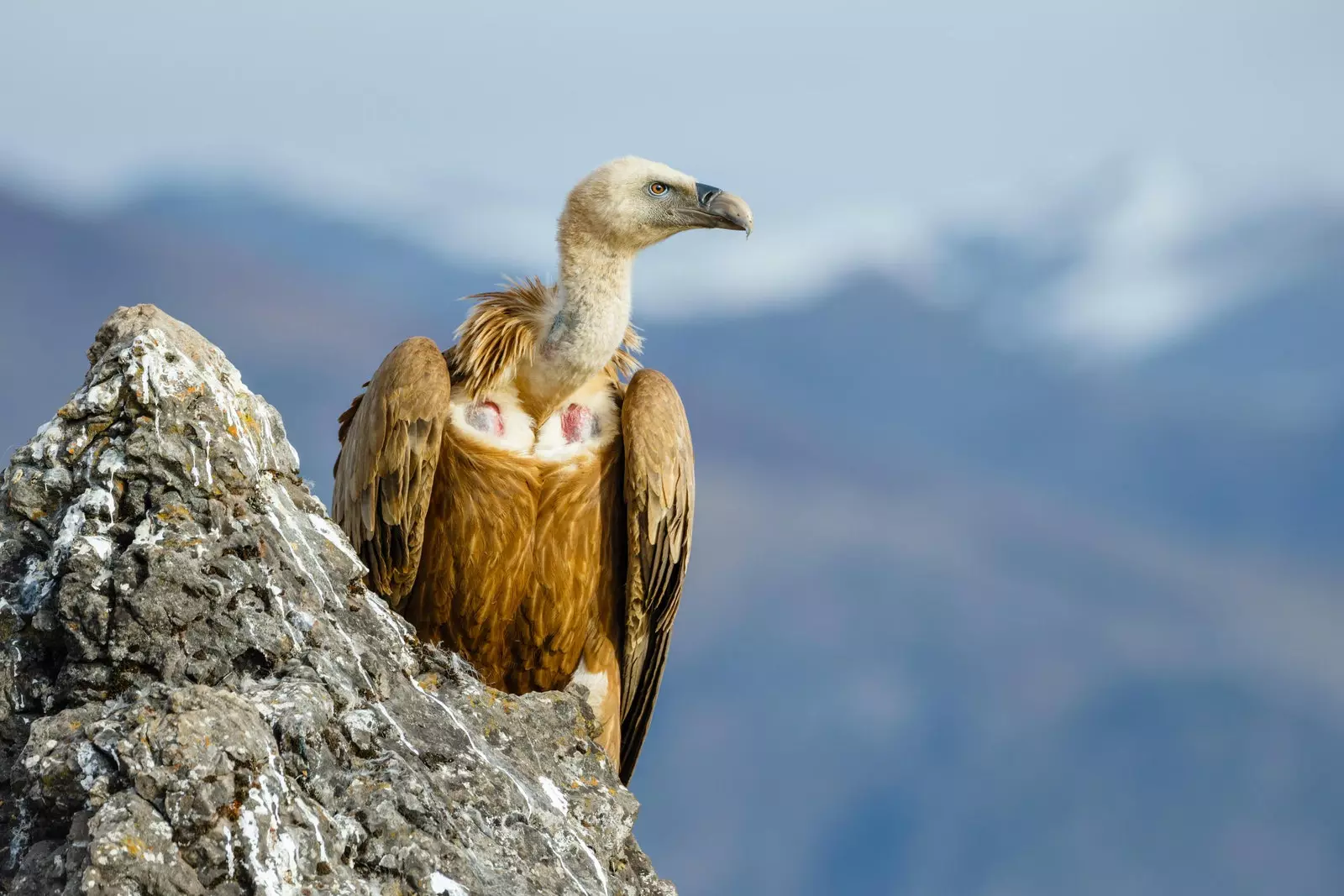
griffon vulture
Where to eat.
It was the first Michelin Star in the province and never disappoints. In Navaleno it is the little wolf , a family restaurant located at the foot of the road that has managed to win the hearts of locals, visitors and critics in the more than 8 years that it has been wearing the award.
raising mycology and truffle to the category of art, Elena Lucas cooks signature dishes that are proud of their roots in a tasting menu served in a cozy space where the pine forests rule. In fact, the appetizer It is taken on a seat that is, nothing more and nothing less, than the same height as one of those stumps where the natives used to sit for lunch.
There is no better plan than being recommended by Diego Munoz, room manager and sommelier, in a menu where wine from Soriano is not lacking either.
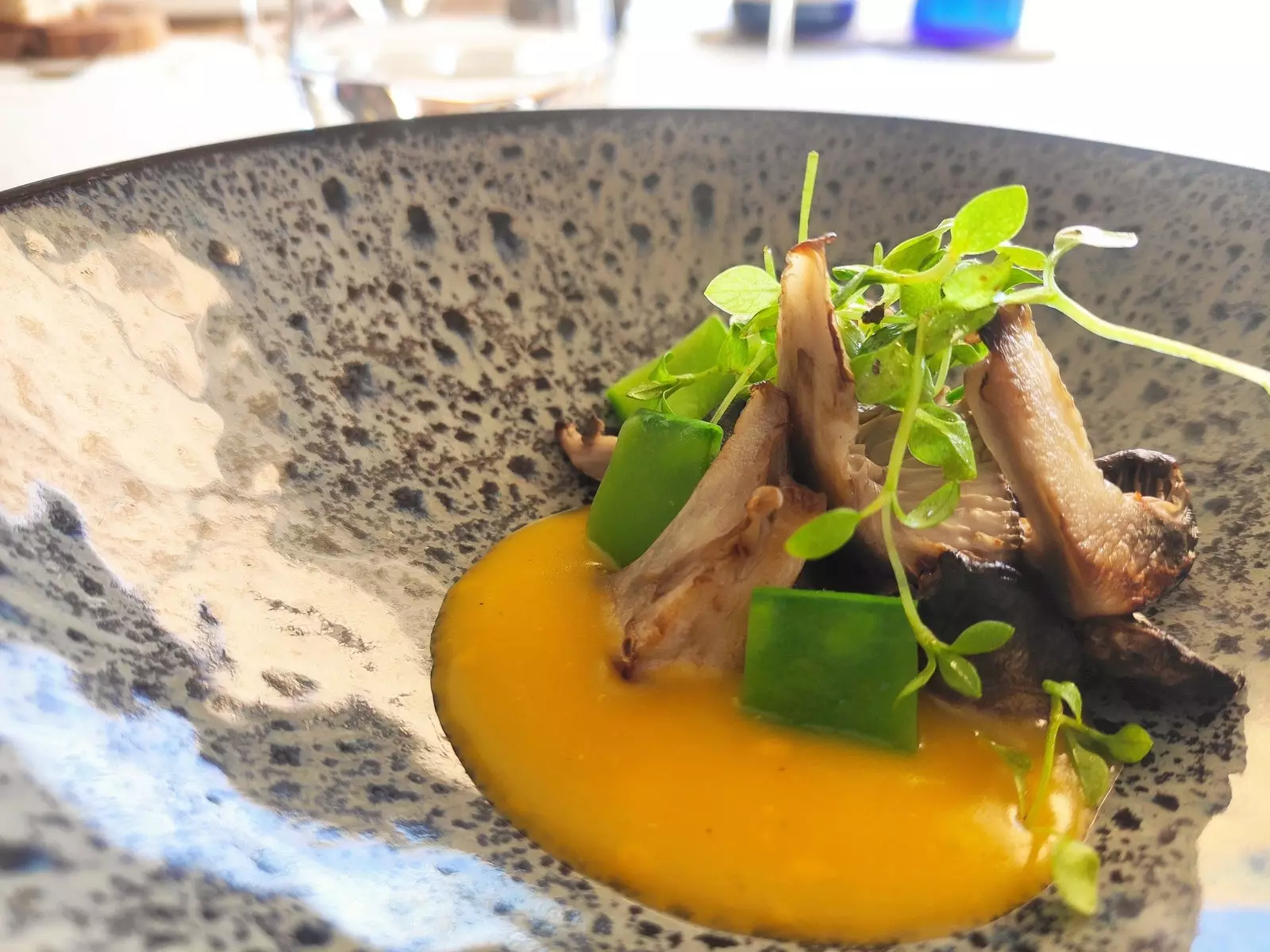
Marzuelos in spiced pumpkin cream and snow peas at La Lobita.
Another option, also in Navaleno, is the Bib Gourmand El Maño . Family restaurant installed in an old restored house where the roe deer is the star dish. And since torreznos can never be missing, at Mesón El Portalón (San Leonardo de Yagüe) expects the best torrezno in the world in 2022.
For its part, if the stop is in Vinuesa, the surroundings of the Town Hall are full of good restaurants. The restaurant is also a tablecloth black lagoon, perfect for a good churrasco, or that of the Hostel The Court of the Pinares , a temple of grilled meat.
Where to sleep.
Both in Navaleno and Vinuesa there is an interesting offer of Rural houses . Although for whims, El Nido de Pinares, a five-star spa hotel with only eight rooms, all of them suites.
LAND OF THE BURGO: PLACE OF LORDS
It is not necessary to go very far from Navaleno to change the region. And of place. The dry land and the stone become protagonists in Land of the Burgh, area of Romanesque churches, castles, fortresses and watchtowers.
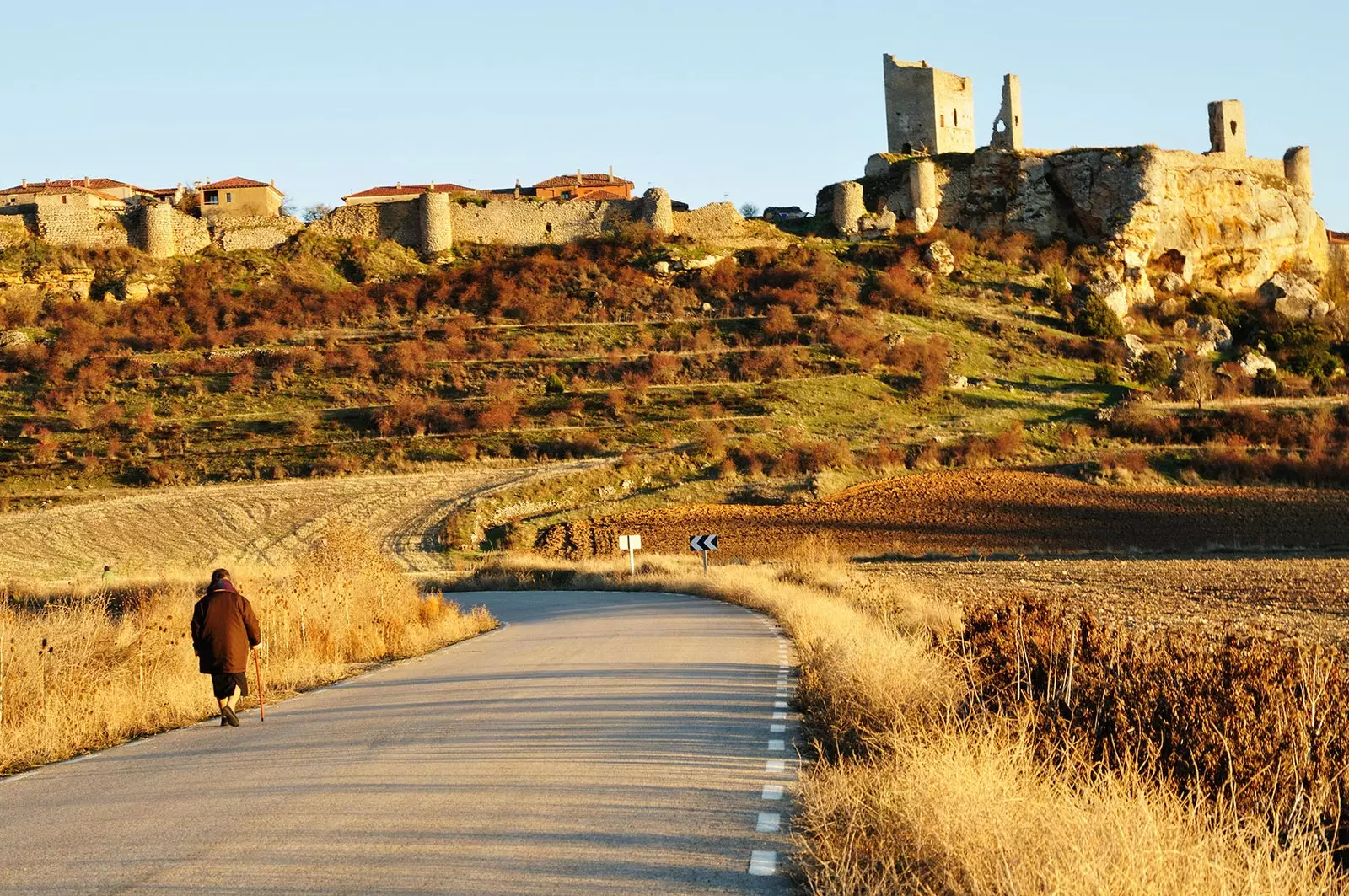
Calatanazor.
There are three essential names in this area. To whet your appetite, there is nothing like starting with the medieval aesthetics of Calatanazor , where the legend says that Almanzor lost his drum.
The route continues to the Historic-Artistic Complex of The Burg of Osma , one of the largest enclaves in the province. Parking and enjoying leisurely in this walled town is an obligation.
Because El Burgo not only houses one of the best gothic cathedrals in Spain, also the archaeological site of Uxama, an ancient Celtiberian-Roman city, and a historic center that exudes good energy.
The third in contention bears the name of Caracena , whose castle is one of the most important medieval fortresses. The visit would be completed by its Baroque-style Royo and its churches of San Pedro de Caracena and Santa María.
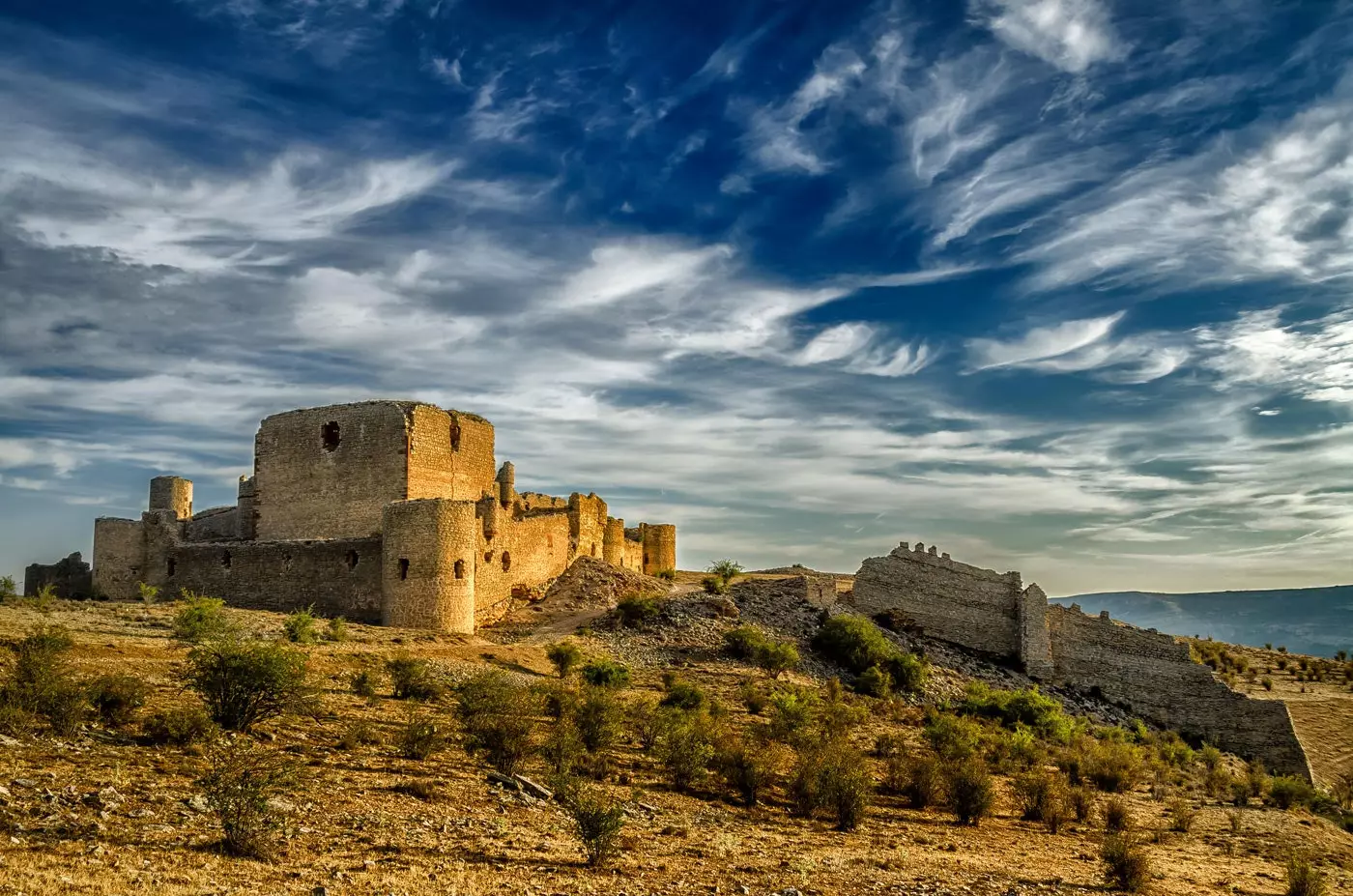
Caracena, Soria.
Where to eat.
Tapas in Burgo de Osma (compulsory visit The Circle and Arevacos ) or sitting at La Parilla de San Bartolo - better known in the area by its old name, La Roca - enjoying the Castillo de Uzero (another of the entrance doors to the Rio Lobos Natural Park).
Where to sleep.
Located in the old University of Santa Catalina, in an emblematic building from the 16th century. Castilla Termal Burgo de Osma boasts of being the first thermal hotel in the province of Soria. Its cloister is a mandatory stop, both guests and visitors.
With its original Plateresque façade and its Renaissance patio, enclosed by a large glass dome , its gastrobar La Universidad is one of the best secrets in the city. In addition, they also have a restaurant.
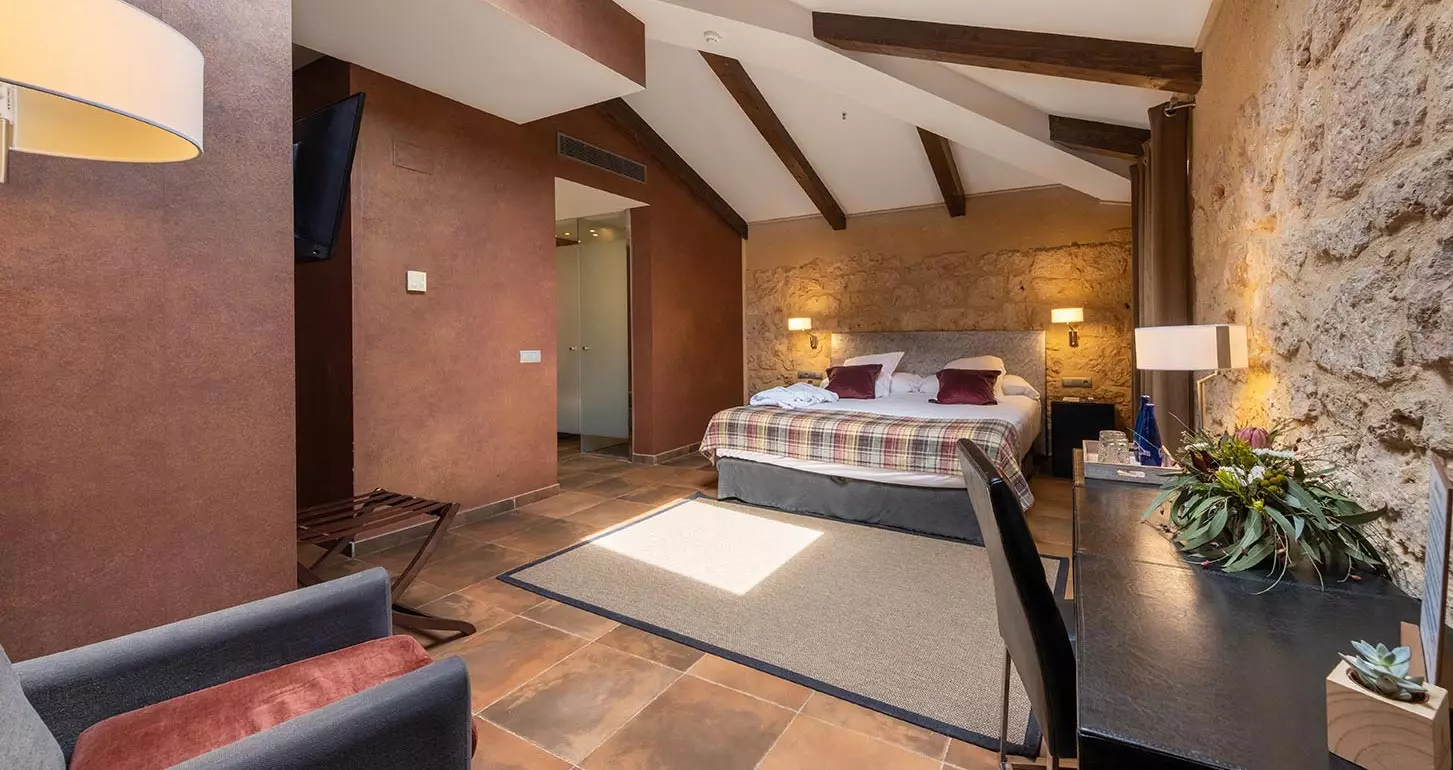
Superior Room in Castilla Termal Burgo de Osma.
ALMAZÁN: THE PLEASURE OF SWEETS
Along with Burgo, Almazán is the other large town in the province. Also stately, as it was the capital of the Kingdom, twice, in the reign of the Catholic Monarchs. There is nothing.
He is still a witness to that power San Miguel's Church , one of the jewels of Soria Romanesque; but the real excuse for stopping here has to do with the palate. Of great pastry tradition, obligatory to try costrada, yolks or patiences . Three delicacies worthy of royalty that will always be found in Almarza, Yemas González or Yemas Gil, their three most iconic pastry shops.
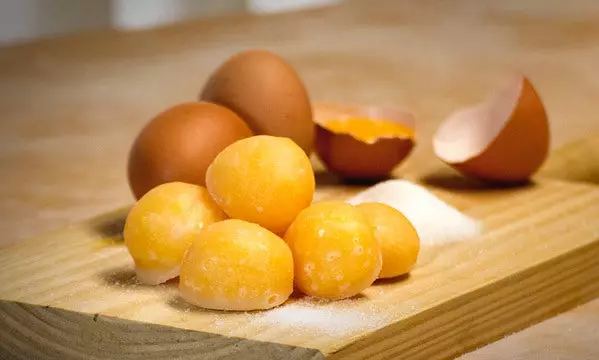
Yemas Gil, Soria.
leaving the village, the Shire into which we now enter intersperses pine forests with farmland, offering a landscape with its own personality. area with intense resin past This is demonstrated by towns such as Matamala de Almazán, Tardelcuende or Quintana Redonda.
Lavish in Romanesque manifestations, there is no shortage of copies in Perdices, Barca, Nepas, Nolay, Escobosa, Viana de Duero, Villasayas, Maján or Adradas. In addition, a 15th-century Renaissance square awaits in Morón de Almazán, as well as the Provincial Museum of the Popular Costume of Soria.
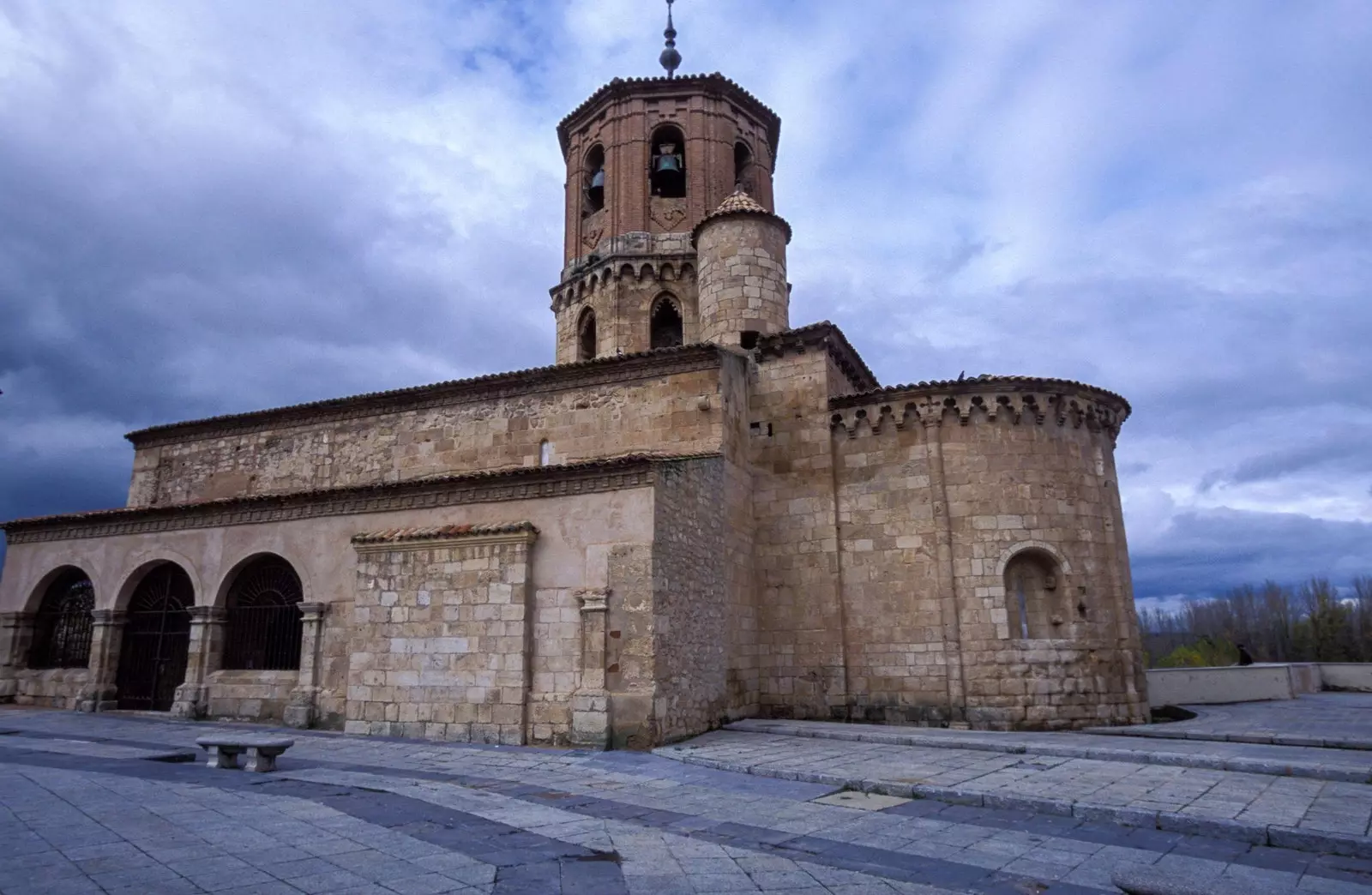
Church of San Miguel, Almazán, Soria.
Where to eat.
The bar-restaurant Port It is a good place to stop and fill your stomach with homemade tapas or a very local menu.
Where to sleep.
Peculiar is the Hotel Rural La Estación del Alma, a house enabled in the old railway station in Almazán.
BERLANGA: LAND OF CONQUESTS
Land of conquests and reconquests, in the south of the province await the Historic-Artistic Ensembles of Berlanga de Duero Y rello . The most Castilian image, with its walls and its fortress on top, is Berlanga. Destination in which, by the way, you will find in its Collegiate a stuffed caiman that Fray Tomás de Berlanga brought from the Galapagos Islands.
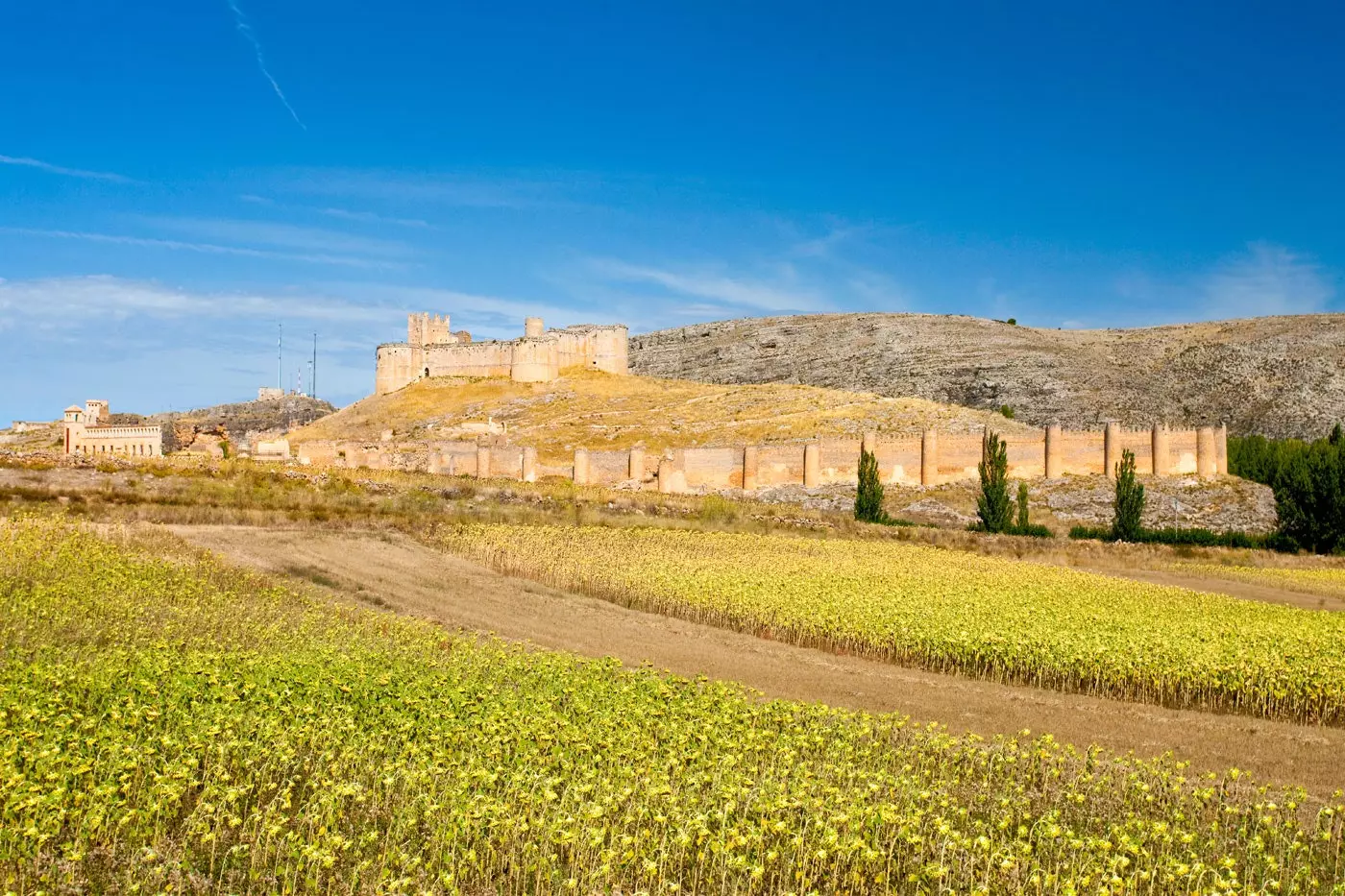
Berlanga de Duero, Soria.
Although if there is a main protagonist in the region, that is the hermitage of Saint Baudelio, considered as the most original jewel of Soria's pre-Romanesque architecture and one of the best preserved Mozarabic hermitages in the world.
In addition, its mural paintings, some of them transferred to the Prado Museum (Madrid), are among the oldest in Spain.
Where to eat.
In Berlanga de Duero it is obligatory to eat in Vallecas House . With a Repsol sun, in mushroom season he throws himself into mycological cuisine, but there is never a shortage of exceptional roasts and game dishes. Highly recommend betting on their tasting menu. We warn you: you will roll out.
Where to sleep.
The modern Hotel Las Casas de Praduela or the historic Hotel Rural Villa de Berlanga, located at a sealing point of the Path of the Cid , allow you to spend the night in full beauty and heritage wealth of the region.
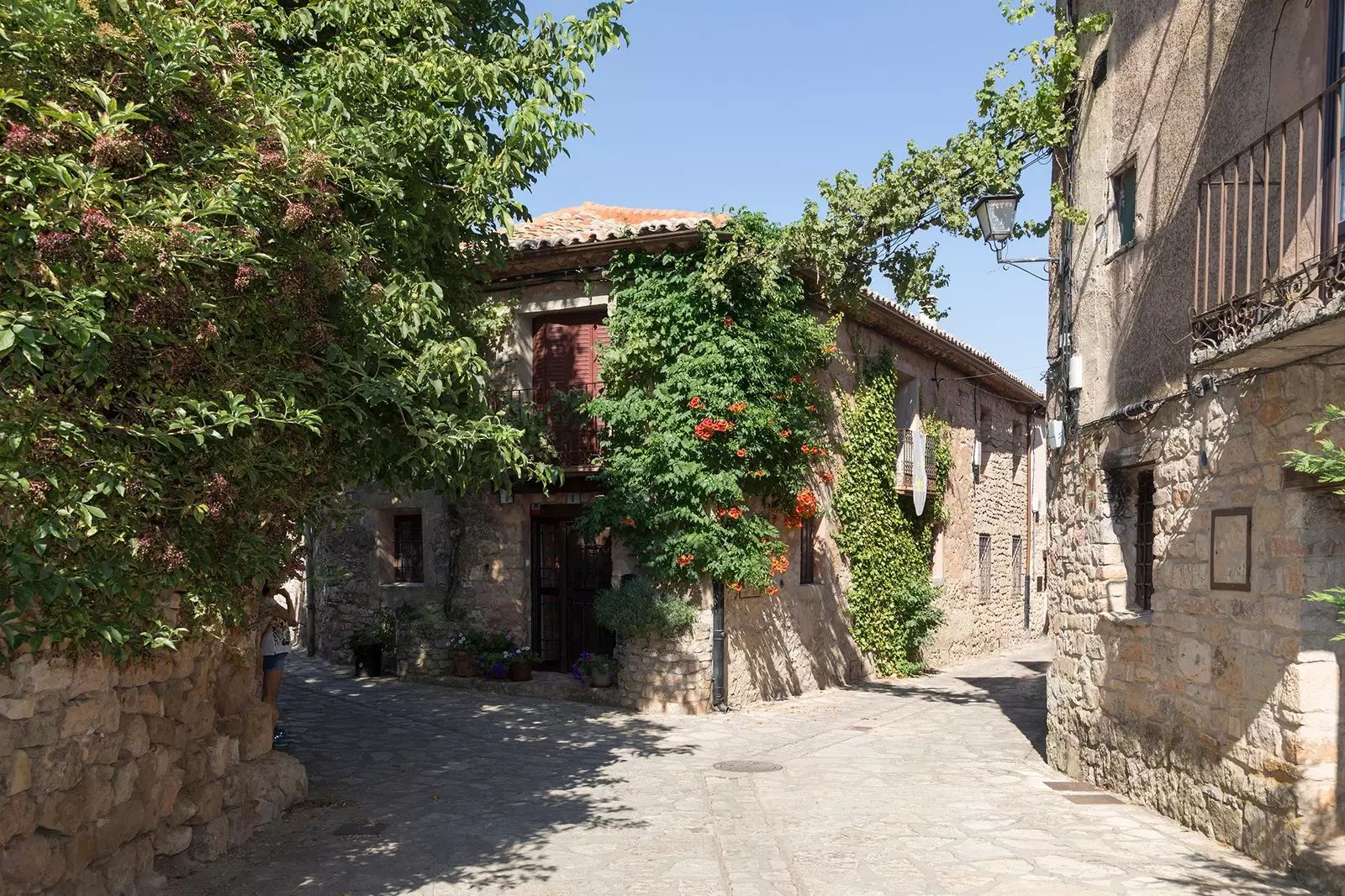
Cobbled streets of Medinaceli, Soria.
Hail Medina Celi
On the way to or from Madrid it is impossible not to look away towards the imposing Medinaceli. The most visible head of the region that bears his name, derived from the Romans who baptized it as the "City of Heaven" (Medina-Celí), well deserves to be part of the network of most beautiful towns in Spain.
its majestic Roman arch, its romantic cobbled streets , its old wall and castle and its mosaics of what were great Roman houses (among much more) make up a declared compendium Historic Artistic Complex since 1963.
Of course, Medinaceli is the Christ, which can be visited in the Collegiate Church. Of architectural interest also highlights the Beguinage of San Roman , which served as a retreat for women from high society, and the Ducal Palace , bastion of the counts and in whose interior the Art Foundation has found a haven for contemporary art lovers.
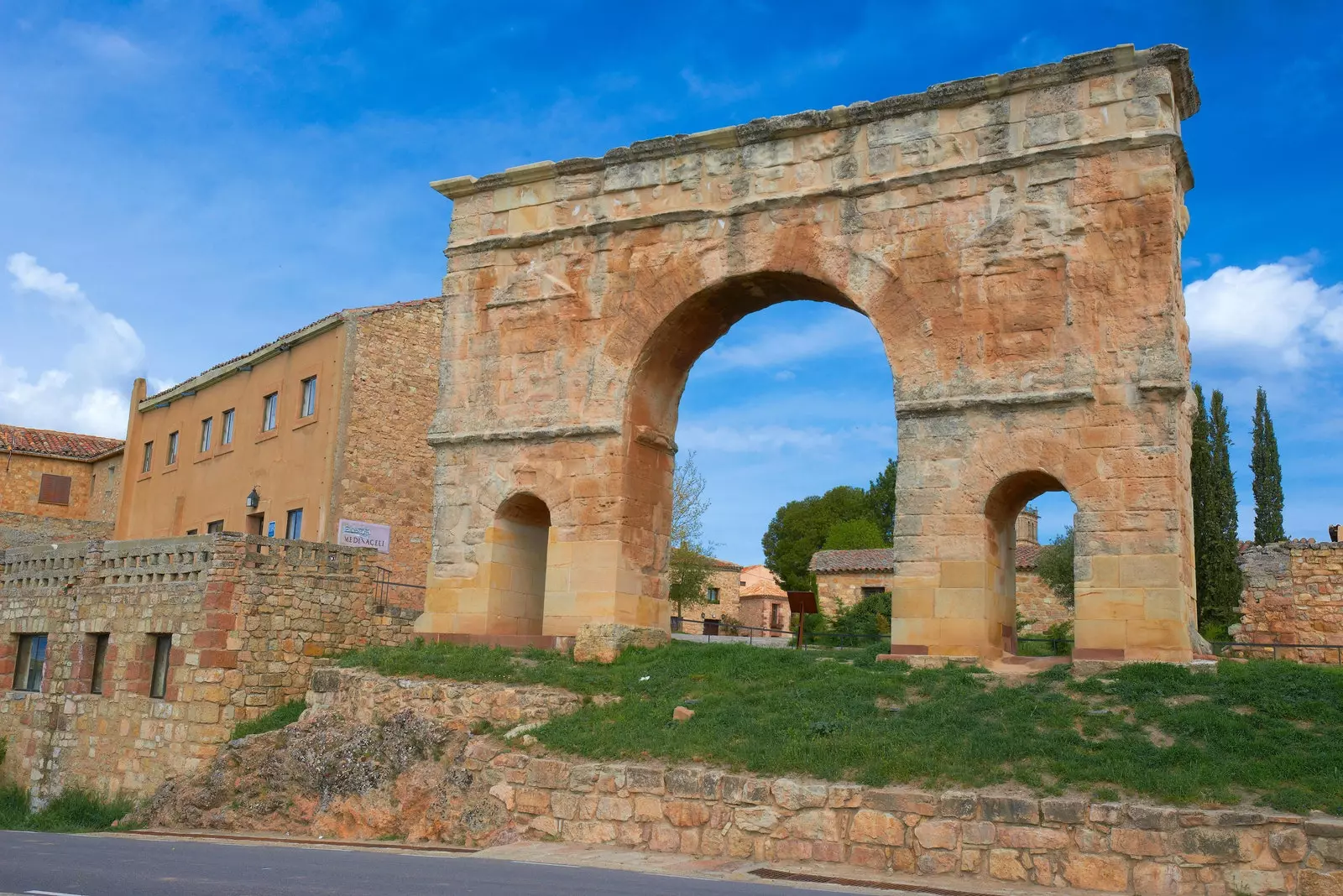
Arch of Medinaceli, Soria.
And after the sky, what? In the region of Medinaceli they wait paleolithic sites, Cistercian monasteries and medieval streets and squares worth telling and visiting.
names like romanillos , with its Romanesque, Roman road and fountain; the deposits of Torralba and Ambrona , with fossilized remains of aurochs, horses, wolves and elephant bones from 300,000 years ago; the red and white streets of Pull Arches or the waterfalls Chaorna , are some of its essentials.
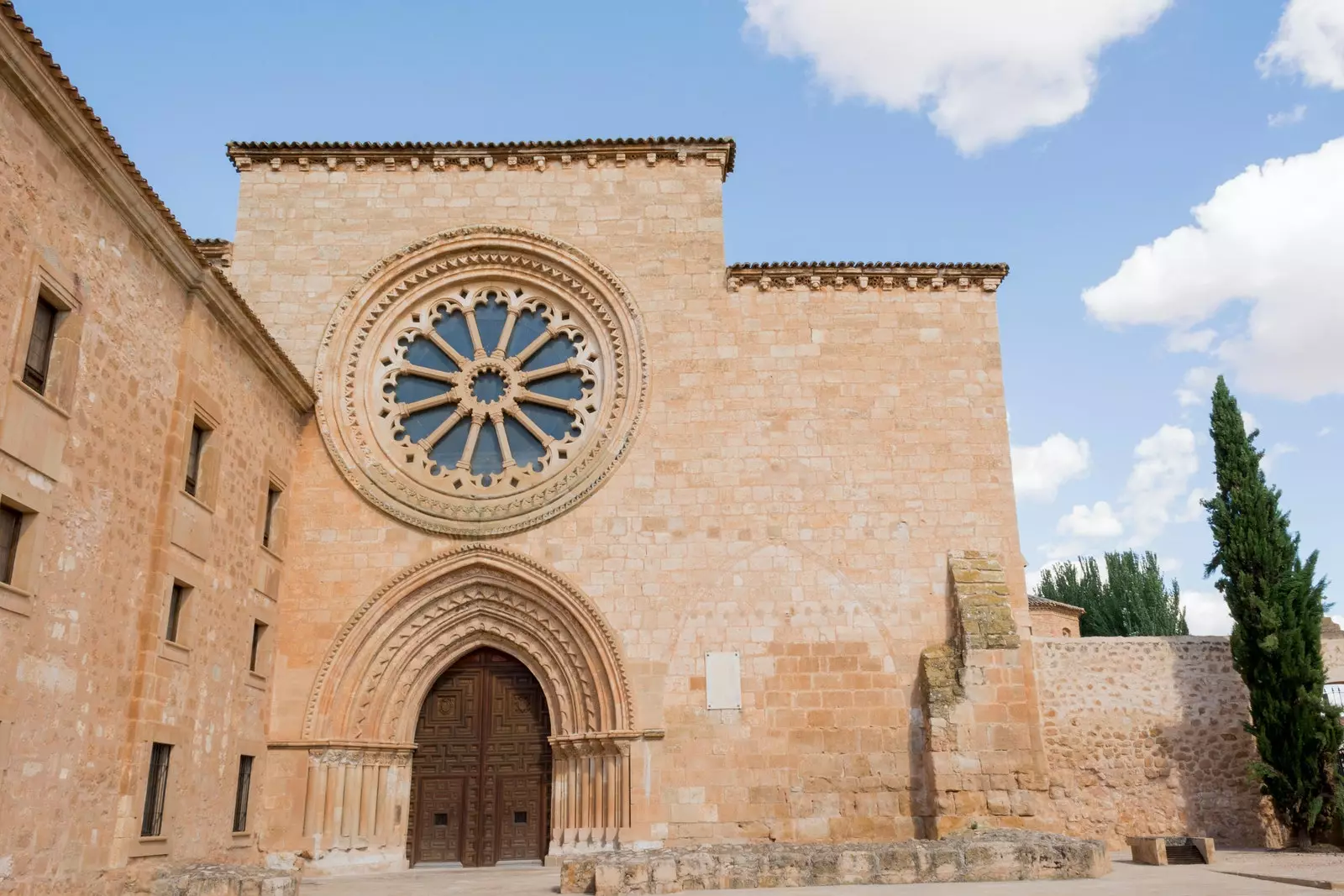
Cistercian monastery of Santa María de Huerta, Soria.
It is also well worth the detour to Santa María de Huerta, a small town that emerged around an impressive cistercian monastery . This is, in fact, the only one preserved in the province of Soriana and inside it still lives a community of monks who follow the Rule of Saint Benedict. If the facade falls in love, wait to discover its gothic refectory.
On the border of the region with Zaragoza Monteagudo of the Vicariates , another of the most beautiful towns in Spain, falls in love with its medieval walled town, castle and Gothic parish. Its hermitage of Ntra. Sra. de la Torre has a very interesting coffered ceiling in Mudejar style.
Finally, a detour signs Almaluez . Take it. The church of this small town protects a unique treasure in Castilla y León: an impressive baldachin 18th century polychrome wood.
Where to eat.
Medinaceli smells of kid, roast lamb and cochifrito. Without a doubt, leaving Medinaceli without eating a good barbecue is sacrilege. The Aljibe is a classic. So is the roadside restaurant Charles Mary , veteran very transited by travelers and carriers.
Where to sleep.
Numerous rural houses await in the area. If you prefer a hotel, the Hotel Medinasalim HVM has only 10 rooms, located 50 meters from the Roman arch of Medinaceli and built on the wall. Another option in Medinaceli is the Casa Palaciega El Cuartel, a house museum of just 10 rooms, with library, cellar and large gardens.
WITH (D.O.) RIBERA
The Duero not only passes through Soria, it bathes a good part of the province and to its credit there is no lack of wine production with DO. Ribera del Duero: Atauta, Castillejo de Robledo, Langa de Duero, Peñalba de San Esteban or San Esteban de Gormaz are some of the main locations to discover an area (somewhat) unknown when it comes to wine.
With its own terroir, with red tiles, white and sandy ocher edges, names like Antidote Cellars either Domain of Is They have already conquered international publications.
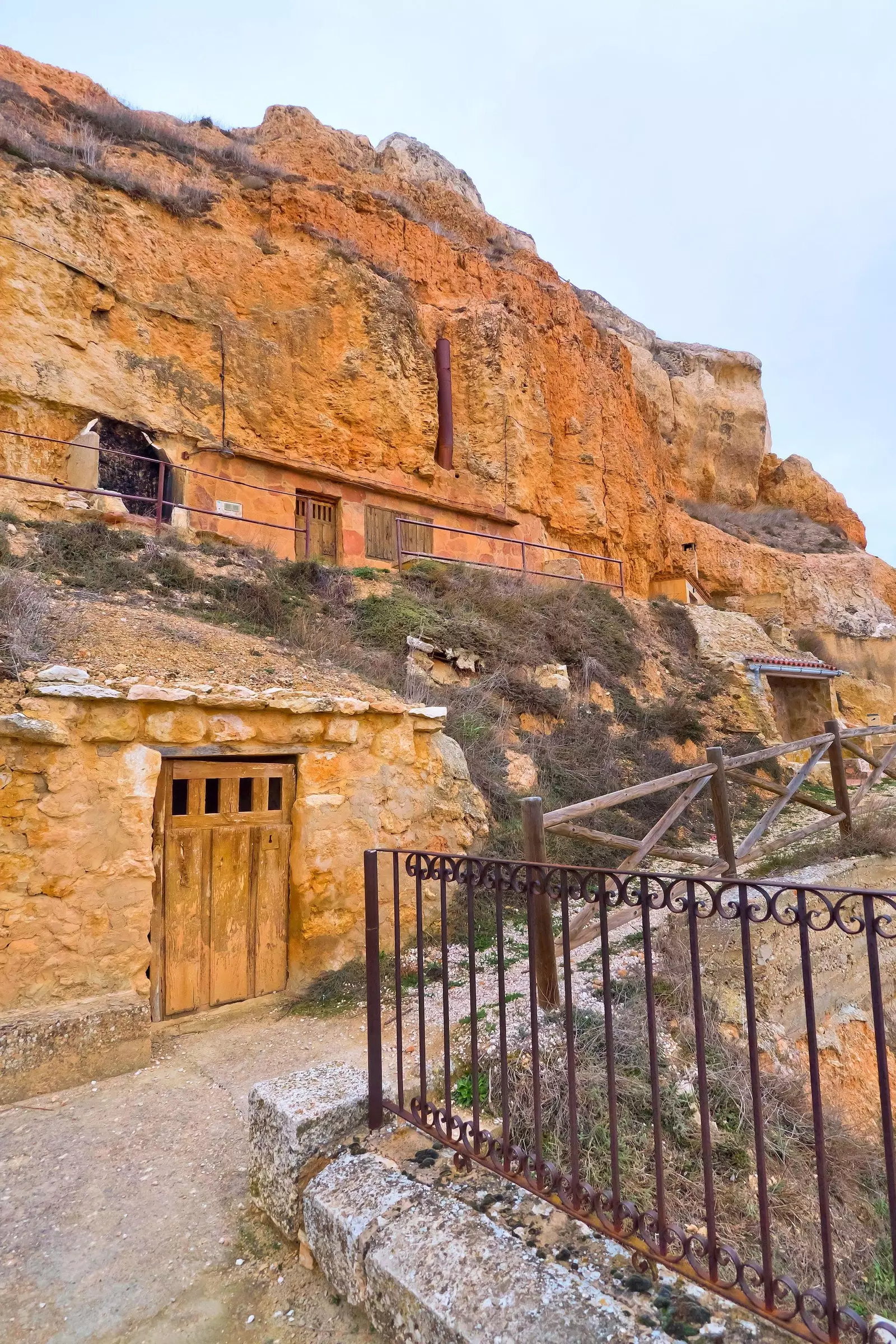
Cellars of San Esteban de Gormaz, Soria.
Very interesting are the traditional wineries drilled into the rock that can be found in Atauta or San Esteban de Gormaz. In fact, with a bit of luck a neighbor will be looking after these historic gems and will invite you to come in and enjoy a glass of wine. Or flat, rather.
In San Esteban de Gormaz, the hill where these mole entrances to the presses and galleries excavated in the earth it offers one of the best views of the town. And of his castle, which came to be the largest European Muslim fortress of its time . Just as important is your Church of San Miguel, where the origin of the Romanesque portico has been located.
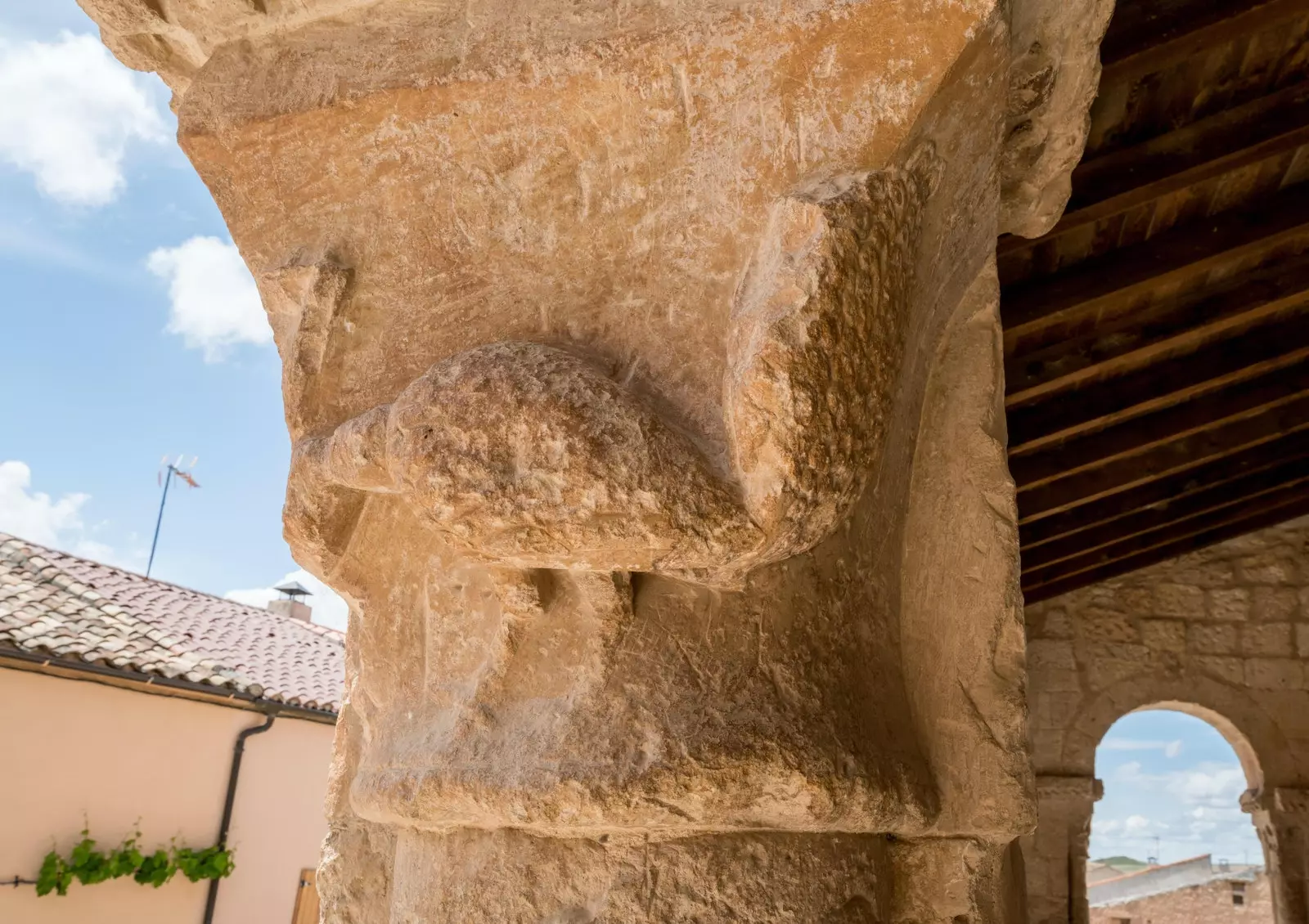
Capital of the church of San Miguel in San Esteban de Gormaz, Soria.
Finally, in the limits of the province we are surprised by the Tiermes deposit , heart of Celtiberia, in a mountain area at 1,230 meters of altitude in the middle of nature.
And if we were on our way to Soria, we will always have to return along the Camino del Cid, the Camino de La Lana and the Camino de Santiago, three routes that cross the Soria region.
Where to eat.
In San Esteban de Gormaz, El Bomba has turned its pickled and stewed partridges into an indisputable classic.
Where to sleep.
The Casa Grande is a house-palace from the beginning of the 20th century located on an organic farm with orchard, vineyard and farm animals. Eleven rooms and views of the Caliphate Fortress of Gormaz.
In Soria you can't even imagine it, you can find even more detailed information to organize your next visit to the province.
